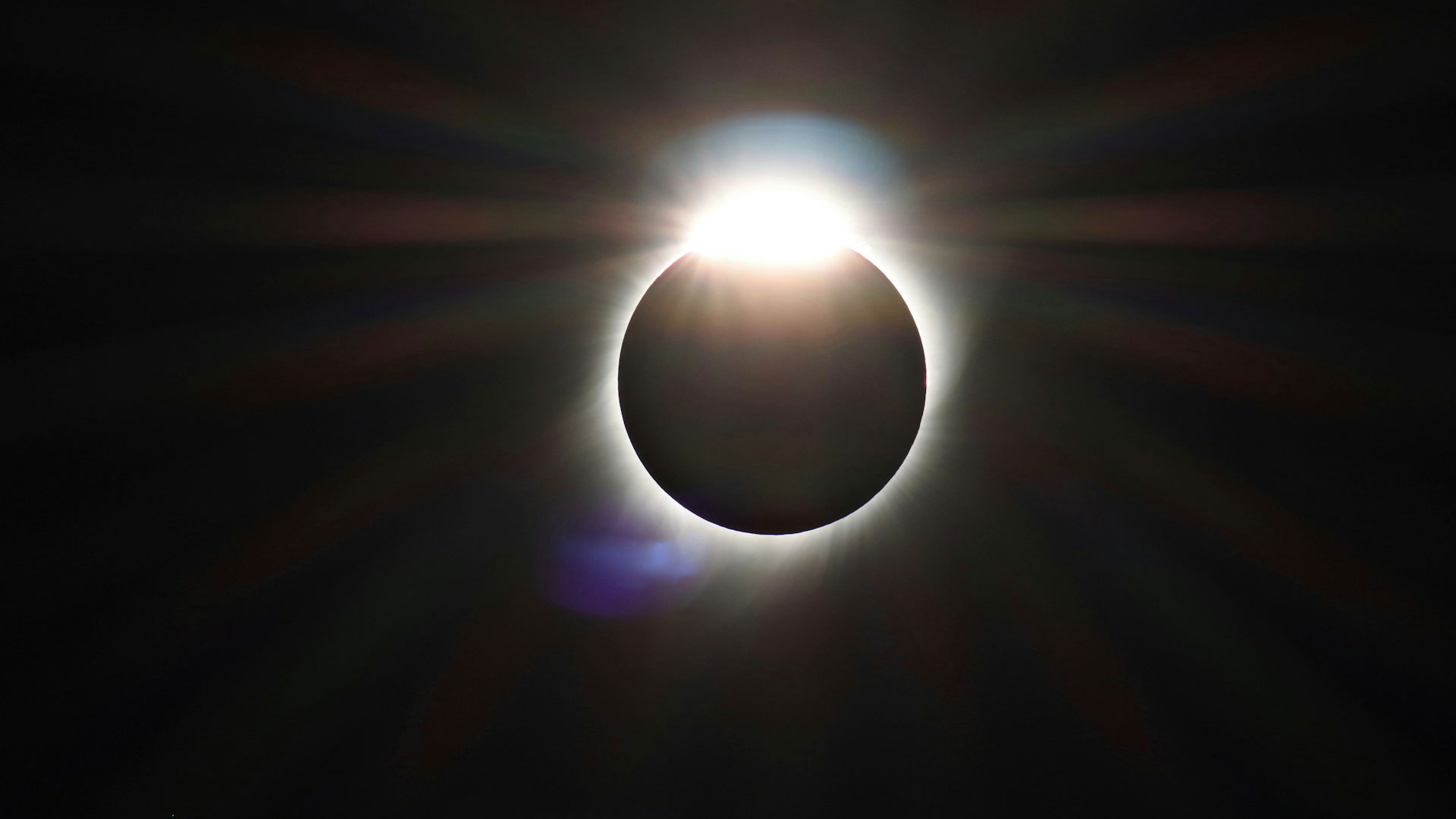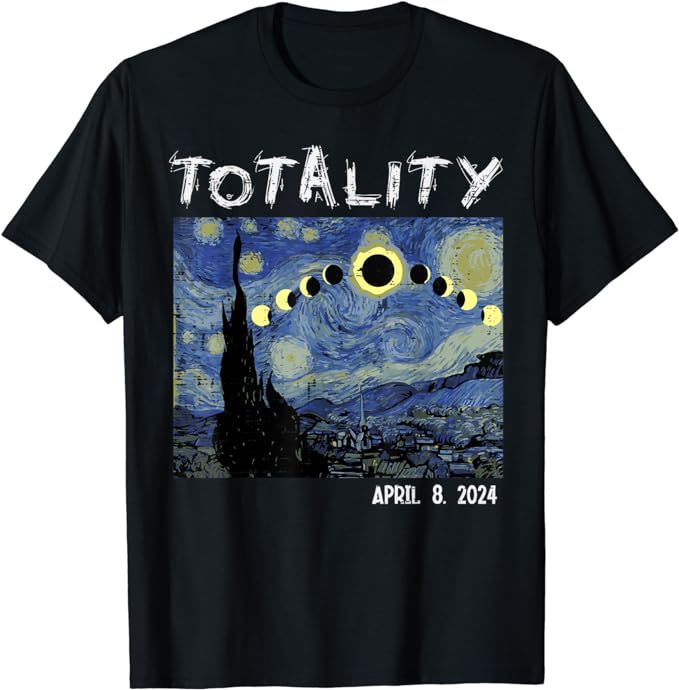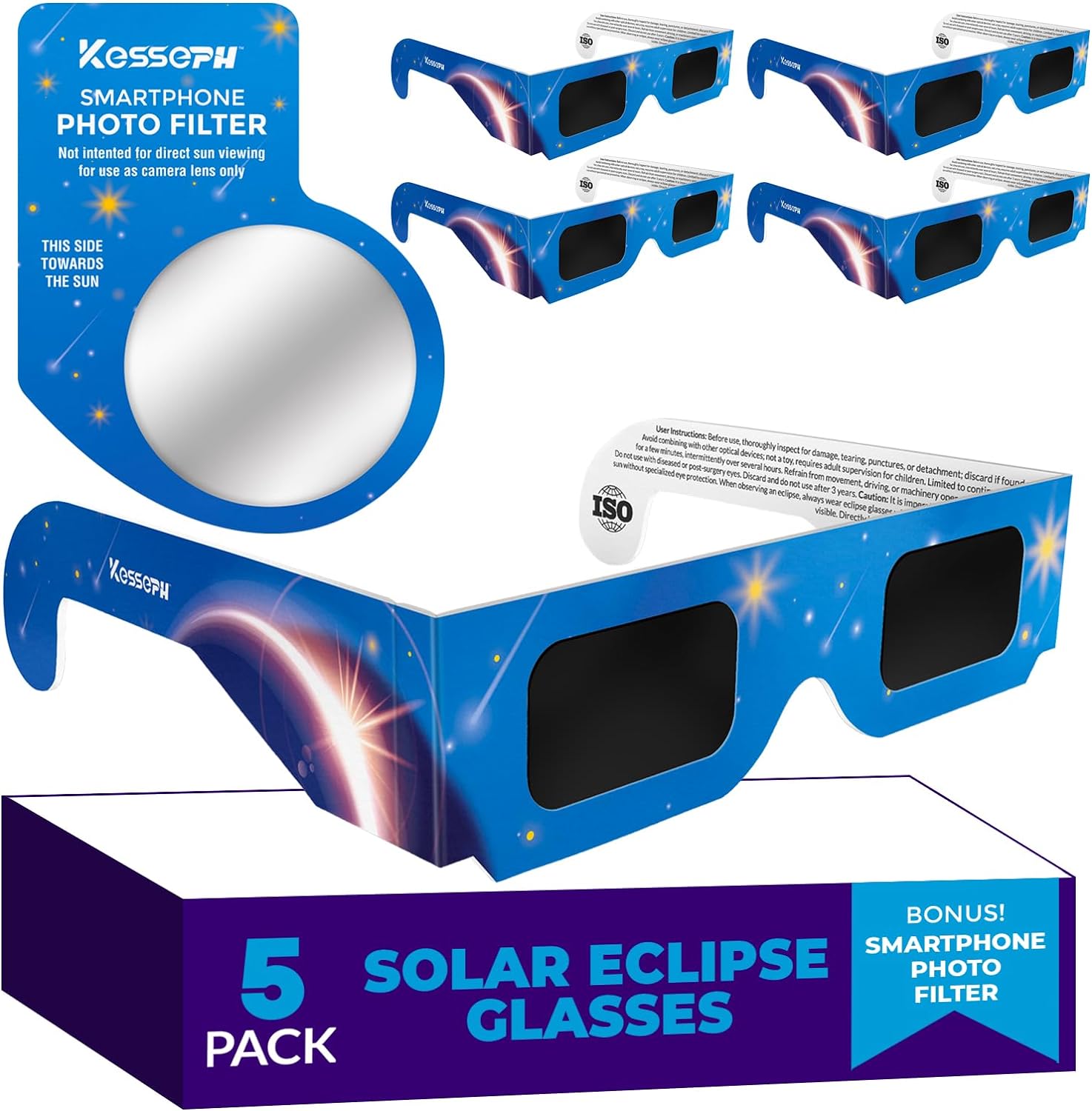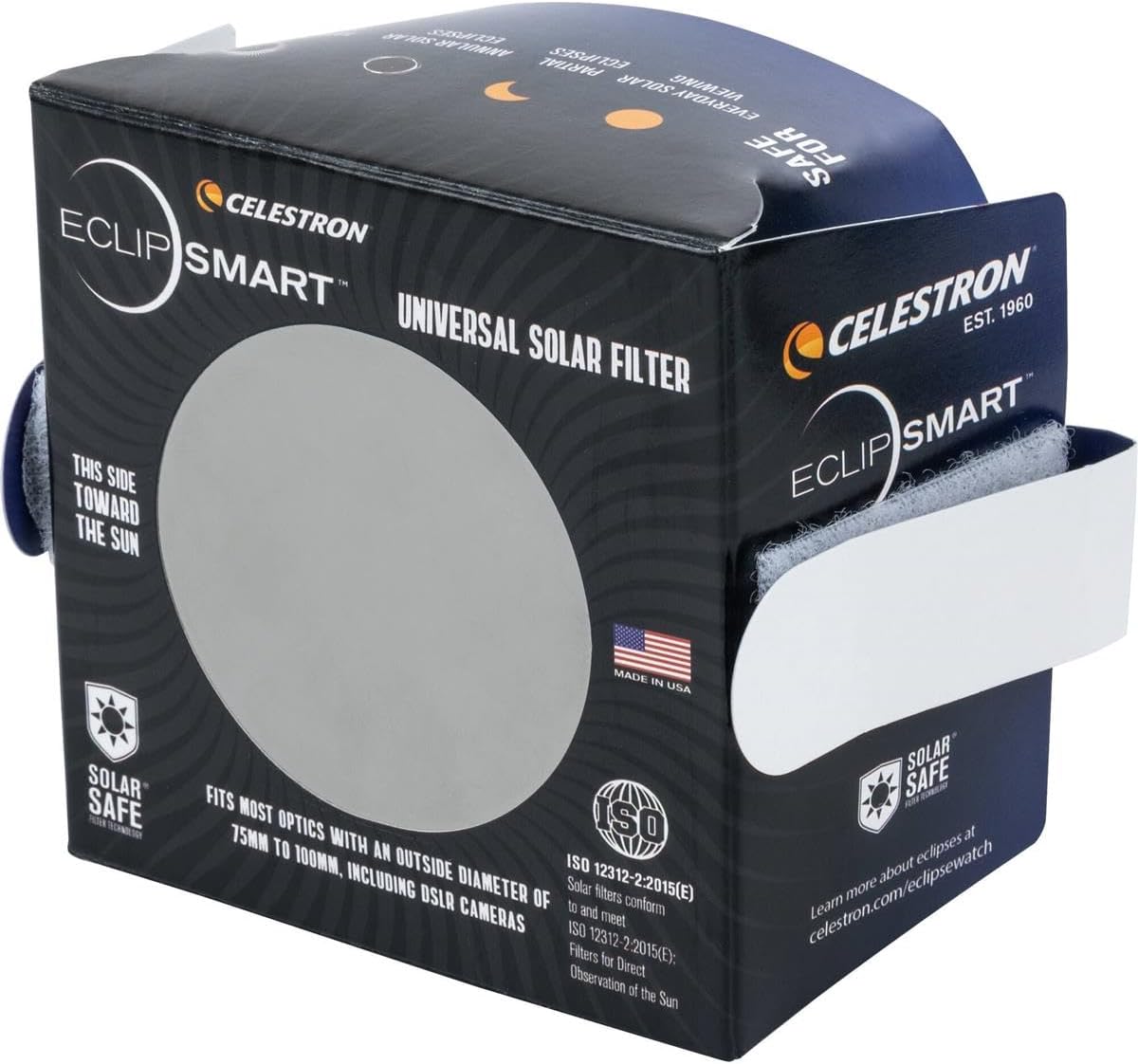
Solar Eclipse 101: Exploring the Phenomenon of a Solar Eclipse
Unveiling the Mystery: A Comprehensive Guide to Solar Eclipses
published: Thursday, March 28, 2024
Solar eclipses are like nature's blockbuster movie, captivating audiences around the globe with their breathtaking displays. Whether you're a seasoned sky-gazer or a curious newcomer, there's something undeniably magical about witnessing the moon slide gracefully in front of the sun, casting its shadow upon the earth below. In this guide, we'll look at the phenomenon of solar eclipses, exploring what makes them so amazing, and how you can safely enjoy the show with your loved ones. From quirky facts to practical tips, get ready for one of the celestial wonders of our solar system.
What Makes Solar Eclipses Fun?
Solar eclipses possess an awe-inspiring allure that transcends ordinary celestial phenomena. As the moon gracefully glides between the Earth and the sun, a hush falls over the landscape, and time seems to stand still. Witnessing this celestial ballet is like peeking behind the curtain of the universe, offering a glimpse into the intricate dance of our solar system. The sheer majesty of seeing the sun momentarily obscured by the moon's shadow leaves spectators breathless, reminding us of the vastness and beauty of the cosmos.
What sets solar eclipses apart is their cosmic rarity that ignites a sense of excitement and anticipation in sky-gazers worldwide. Unlike the predictable cycles of the moon or the steady march of the stars across the night sky, solar eclipses occur infrequently, adding to their allure. Each eclipse is a unique event, a fleeting moment when the heavens align in perfect harmony. It's a thrill to be part of something so extraordinary, to witness firsthand the cosmic spectacle that has captured the imaginations of humans for centuries.
Above all, solar eclipses evoke a profound sense of wonder and curiosity, stirring the primal instincts of exploration and discovery that lie dormant within us all. As we gaze skyward, marveling at the celestial show unfolding before our eyes, we're transported back to a time when the mysteries of the cosmos sparked our imagination and fueled our thirst for knowledge. Whether we're seasoned astronomers or casual observers, there's something undeniably magical about standing in the shadow of the moon, united in awe and wonder at the beauty of the universe.
Our Favorite
Art Solar Eclipse 2024 Totality
Get ready for the celestial event of a lifetime with this Art T-Shirt commemorating the 2024 total solar eclipse on April 8th. Whether you're in Ohio, Arkansas, Texas, Indiana, or anywhere else in America, this shirt is the perfect way to celebrate and remember the awe-inspiring moment of totality. Made from a comfortable blend of cotton and polyester, this lightweight shirt is suitable for men, women, and kids alike. Don't miss out on this rare cosmic spectacle—grab your viewing glasses and this exclusive eclipse tee today!

Ways to Watch a Solar Eclipse
When observing a solar eclipse, safety should always be the top priority. One of the safest ways to watch is by using certified solar eclipse glasses or handheld viewers, specially designed to filter out harmful rays and protect your eyes from damage. These glasses are essential for direct viewing of the sun during the partial phases of an eclipse, ensuring that you can enjoy the spectacle without risking eye injury. Additionally, you can create a pinhole projector using simple household materials, such as cardboard and aluminum foil, to indirectly view the eclipse without looking directly at the sun.
For those seeking a communal eclipse-watching experience, look for popular viewing locations and events in your area. From designated viewing areas in parks or observatories to organized eclipse parties hosted by astronomy clubs or educational institutions, there are plenty of opportunities to join fellow enthusiasts in witnessing this celestial phenomenon. These gatherings often feature expert speakers, educational activities, and live eclipse broadcasts, providing a fun and immersive experience for spectators of all ages.
For enthusiasts looking to enhance their eclipse viewing experience, telescopes, binoculars, and other optical devices offer a closer look at the intricate details of the eclipse. However, it's crucial to safely use these tools to avoid damaging your eyes or equipment. Specialized solar filters or viewing lenses should always be used when observing the sun through optical instruments, as regular filters or lenses can magnify the sun's intensity and cause irreversible harm. With proper precautions and a sense of adventure, watching a solar eclipse can be a thrilling and memorable experience for sky-gazers of all skill levels.
Solar Eclipse Glasses: What Makes Them Different?
When observing a solar eclipse, protecting your eyes is paramount. Staring directly at the sun, even during an eclipse, can cause serious and permanent damage to your eyesight. That's where solar eclipse glasses come in—they're specifically designed to block out harmful ultraviolet, visible, and infrared light, allowing you to safely view the sun's awe-inspiring spectacle without risking eye injury. These glasses feature special solar filters that meet stringent safety standards set by organizations like the American Astronomical Society (AAS) and the International Organization for Standardization (ISO), ensuring your eyes are shielded from the sun's intense rays.
Solar eclipse glasses differ significantly in their protective capabilities from regular sunglasses. While sunglasses may reduce glare and filter out some UV radiation, they're not designed to block the intense sunlight encountered during an eclipse. Without proper solar filters, regular sunglasses can't provide adequate protection for direct viewing of the sun, putting your eyes at risk of damage. Solar eclipse glasses are specifically engineered to block out the harmful wavelengths of light emitted by the sun, allowing you to safely observe the eclipse without compromising your vision.
Our Favorite
Solar Eclipse Glasses
Experience a Total Solar Eclipse with confidence using our CE and ISO Certified Solar Eclipse Observation Glasses. Meticulously crafted for direct sun viewing, these glasses adhere to stringent safety and quality standards set by the American Astronomical Society. Independently tested and verified, they offer exceptional eye protection, ensuring your safety during this phenomenal event. Each pack includes a bonus Smartphone Photo Filter Lens, allowing you to capture the enchantment of the eclipse with unparalleled precision. Don't miss this rare opportunity to witness the breathtaking moment of Totality.

Health Concerns to Consider
While witnessing a solar eclipse can be a mesmerizing experience, it's crucial to be mindful of potential health risks associated with direct sun exposure. Staring at the sun, even during an eclipse, can cause damage to your eyesight, leading to conditions like solar retinopathy or permanent vision loss. Always use certified solar eclipse glasses or handheld viewers with proper solar filters to safeguard your eyes, and never look directly at the sun without protection. It's also important to shield your skin from the sun's harmful ultraviolet (UV) radiation by wearing sunscreen with a high SPF rating and seeking shade whenever possible. For individuals with pre-existing eye conditions, such as cataracts or macular degeneration, it's especially crucial to consult a healthcare professional before viewing a solar eclipse, as they may be at increased risk of eye damage. Taking proactive measures to protect your eyes and skin, you can safely enjoy the wonder of a solar eclipse without compromising your health.
A Brief History and Science Behind Solar Eclipses
Solar eclipses have long held profound cultural significance across civilizations throughout history. Ancient cultures often interpreted these celestial events as divine omens or supernatural phenomena, with myths and legends emerging to explain their occurrence. In ancient China, for example, people believed that solar eclipses were caused by a celestial dragon devouring the sun—a belief that led to the practice of banging drums and making loud noises to scare away the mythical beast. Similarly, in Norse mythology, solar eclipses were attributed to the actions of sky wolves pursuing the sun and the moon, prompting rituals to protect against their influence. Across the globe, solar eclipses have inspired awe and reverence, leaving a lasting imprint on the collective imagination of humanity.
From a scientific perspective, solar eclipses occur when the moon passes between the Earth and the sun, casting its shadow onto the Earth's surface. This alignment occurs during the new moon phase when the sun, moon, and Earth are perfectly aligned along the same plane. As the moon's shadow sweeps across the Earth, observers within the path of totality experience a temporary darkness known as the umbra, while those outside the path witness a partial eclipse. The intricate dance of celestial bodies involved in a solar eclipse showcases the elegant mechanics of our solar system, highlighting the gravitational forces and orbital dynamics that govern their movements.
Throughout history, solar eclipses have left an indelible mark on human civilization, shaping our understanding of the cosmos and influencing cultural, religious, and scientific developments. One of the most famous eclipses is the solar eclipse of May 29, 1919, which provided experimental evidence supporting Albert Einstein's theory of general relativity by demonstrating the bending of light around massive objects like the sun. Other notable eclipses include the solar eclipse of August 21, 2017, which captivated millions of viewers across the United States and sparked widespread interest in astronomy. By exploring historical and scientific aspects of solar eclipses, we gain a deeper appreciation for these celestial phenomena and their enduring impact on human culture and knowledge.
Our Favorite
Celestron – EclipSmart Safe Solar Eclipse Telescope and Camera Filter
Enhance your solar observing experience with the Celestron Safe Solar Eclipse Telescope and Camera Filter. Designed to meet ISO 12312-2:2015(E) standards, this filter provides a safe viewing solution for eclipses, sunspots, and daily solar observations. Compatible with telescopes, spotting scopes, and DSLR cameras, it features adjustable side panels and an elastic band for a secure fit. The USA-made Solar Safe film ensures protection against IR, UV, and visible light, while the natural orange tint offers optimal visual clarity. Capture stunning images and enjoy unbeatable warranty and support from Celestron, a trusted telescope brand since 1960.

Activities to Enjoy While Watching
Watching a solar eclipse is not just about observing the sky—it's also an opportunity to gather with friends and family for a memorable experience. Hosting an eclipse party or picnic adds a festive atmosphere to the occasion, allowing everyone to share the excitement of the celestial event. Set up blankets or lawn chairs in a prime viewing location, bring snacks and refreshments, and enjoy the eclipse together while swapping stories and marveling at the wonders of the universe.
For those looking to contribute to scientific research while watching the eclipse, citizen science projects offer a unique opportunity to get involved. Organizations like NASA and the Citizen Science Association often coordinate projects that enlist the help of amateur astronomers and skywatchers to collect data during eclipses. Recording changes in animal behavior, measuring temperature fluctuations, or tracking the eclipse's path across the sky, participating in citizen science projects adds a meaningful dimension to the viewing experience and contributes valuable insights to scientific research.
Documenting the eclipse is a creative way to preserve memories and share the experience with others. Grab your camera or smartphone and capture stunning eclipse photographs, experimenting with different angles and settings to capture the moment in all its glory. Alternatively, keep a journal or sketchbook to record your thoughts, observations, and emotions before, during, and after the eclipse. By documenting the event through photography, journaling, or artistic expression, you can create a lasting memento of this extraordinary celestial event and inspire others to join in the wonder of solar eclipses.
Conclusion
As the celestial curtains close on a solar eclipse, it's clear that these cosmic spectacles are not just scientific marvels but opportunities for shared experiences and wonder. By arming ourselves with knowledge and proper precautions, we can safely bask in the beauty of these rare events, cherishing the memories made under the moon's shadow. So, grab your eclipse glasses and gather your loved ones—it's time to embark on an adventure that's truly out of this world!